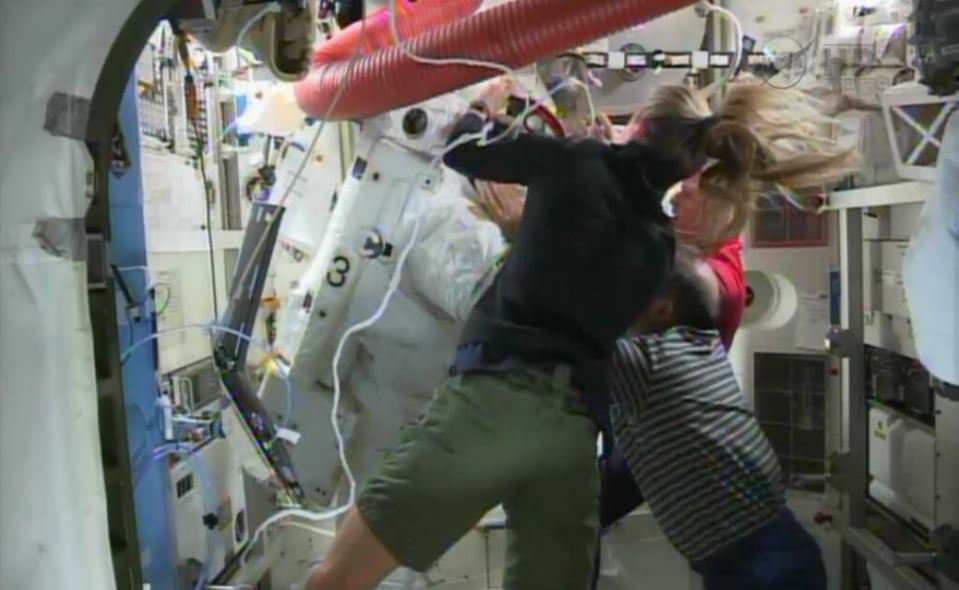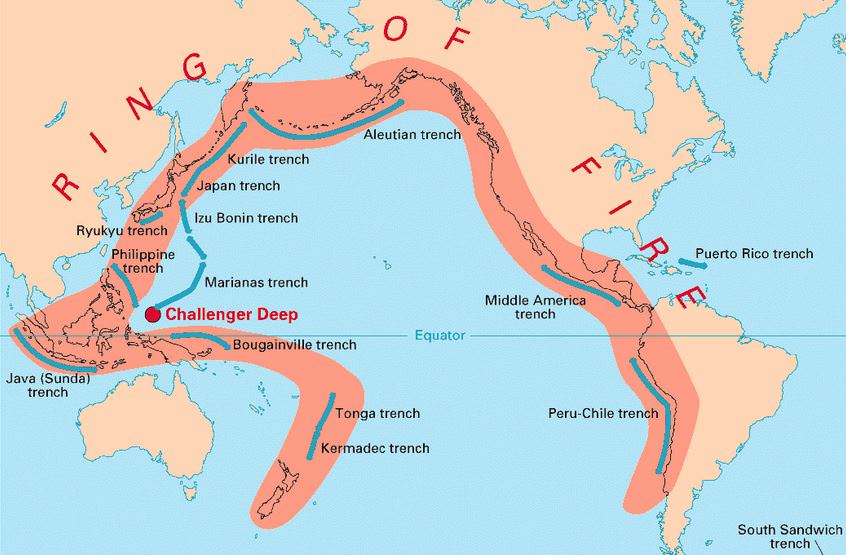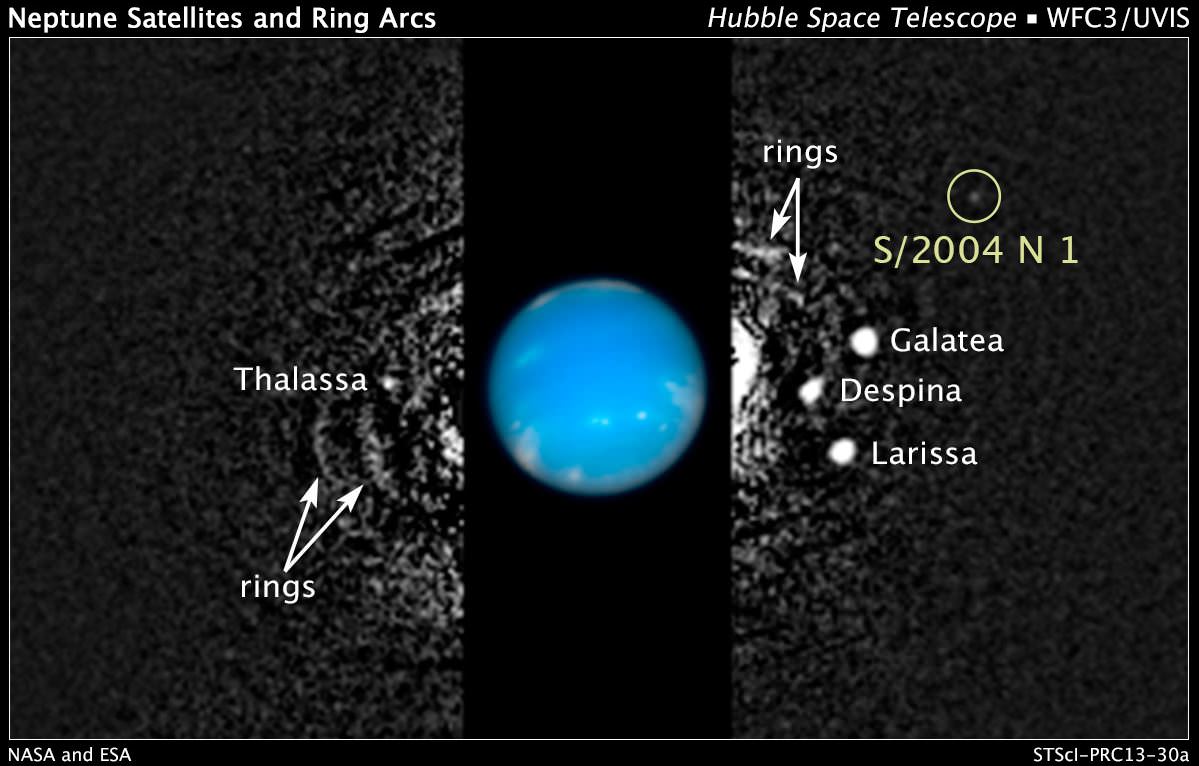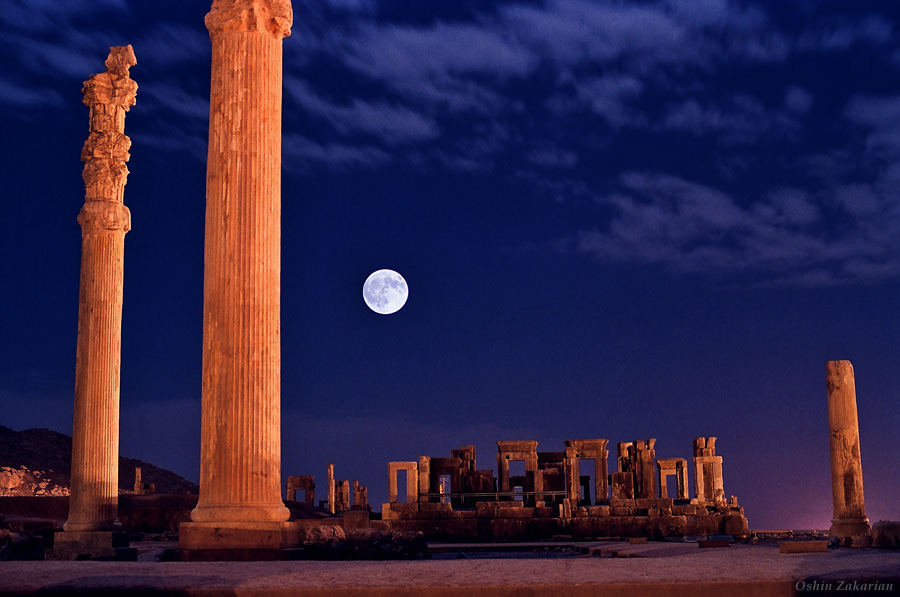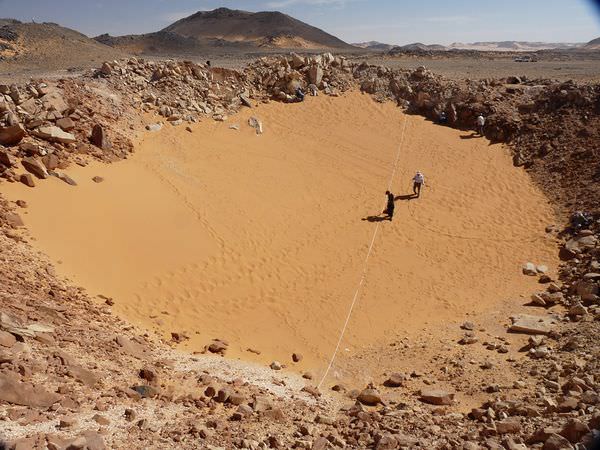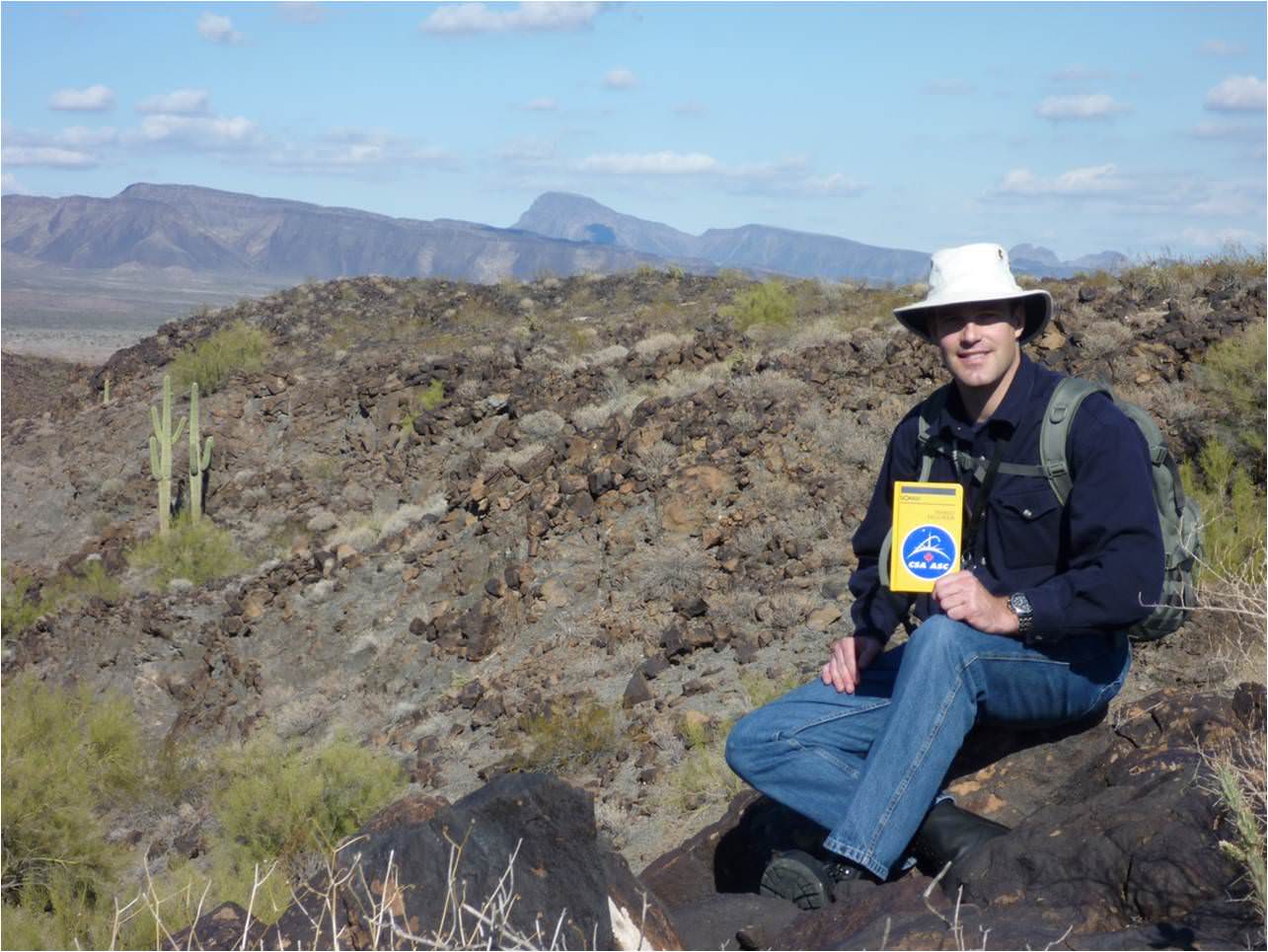Today’s spacewalk at the International Space Station was cut short due to a water leak inside astronaut Luca Parmitano’s spacesuit. At one point, there was so much water inside Parmitano’s ears and around his face that he couldn’t hear or speak to communicate with the other astronauts. “Squeeze my hand if you’re fine,” fellow EVA member Chris Cassidy said to Parmitano.
What was supposed to be a 6-7 hour spacewalk lasted only 1 hour and 32 minutes after the leak occurred.
If you don’t think a little water could be a problem inside a spacesuit, recall how Chris Hadfield showed how water clung to his eyes in a simulated “cry,” or continued to cling to a washcloth even though it was being wrung out (see video below). The water inside Parmitano’s helmet literally surrounded and clung to his face and head.
“He looks miserable, but is OK,” the crew told Mission Control after they quickly removed Parmitano’s helmet and toweled off his face and head.
NASA TV said the cause of the leak in the helmet was “not readily identifiable,” but Parmitano appeared to be examining the drink bag that was inside his helmet shortly after the two astronauts got inside and were removed from their suits. However, just a short time later, Cassidy told Mission Control that Parmitano said the “water tasted really funny,” so it was likely not from the drink bag, and was perhaps the iodinated water from the crew’s liquid-cooled undergarments. But Cassidy also said Parmitano’s torso was essentially dry, and that the source of water seemed to be around the back of his head.
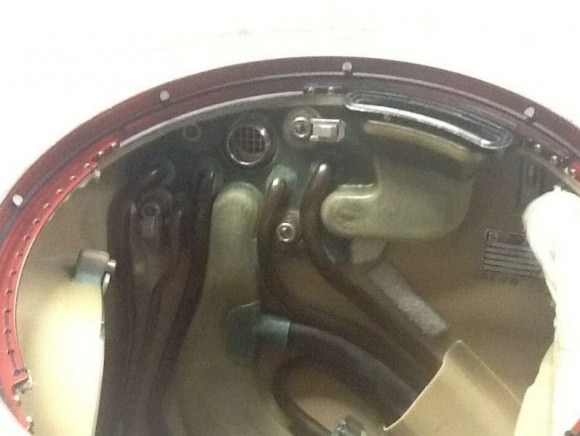
NASA is still investigating the source of the leak, and will have followup discussions and medical conferences with the astronauts to find out more and to make sure Parmitano is OK.
The two astronauts were going to continue tasks from last week’s EVA: routing power and data cables for a new Russian laboratory module scheduled to be launched to the ISS late this year or early 2014. They also were going to reposition a wireless camera antenna on the station’s power truss and replace a camera on the external deck of the Japanese Kibo lab module.
But the spacewalkers only completed one task before the leak became a problem. This was the second shortest spacewalk on record; on June 24, 2004, pressure problem in Mike Fincke’s spacesuit prompted an abbreviated 14-minute EVA.
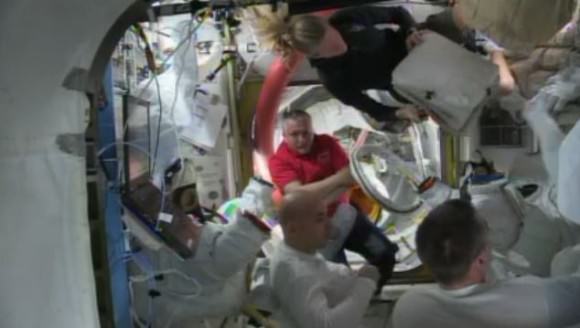
The @SpaceShuttleAlmanac Twitter feed may have provided the best analogy of what Parmitano was experiencing during the leak: “Imagine having a fishbowl on your head with a half a litre of water sticking to your face, ears and nose. Then imagine you can’t take the fishbowl off your head for a minimum of 20 minutes, feel the panic?”
This was the 171st EVA for station construction and maintenance. NASA said nothing critical to station will be affected as a result of cutting the space walk short. Likely another EVA will be scheduled for the tasks.
NASA will be holding a news conference later today to provide more information.

